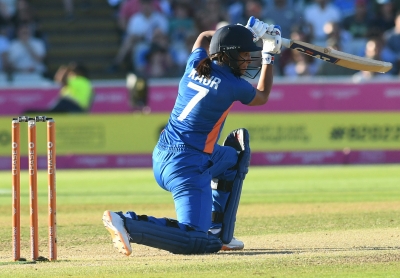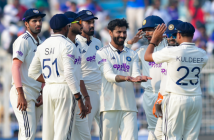By Yajurvindra Singh
The India versus Australia semifinal match of the Women’s T20 World Cup 2023, was a real humdinger. These are the type of close-finishing matches that will augur well for women’s cricket.
Unfortunately for India, they lost by a narrow margin of 5 runs against a champion side. The match was at a critical stage when India had just put their nose ahead. A casual second run resulted in the “run out” of their captain, Harmanpreet Kaur, which was an unsavoury end to her stupendous innings.
Her departure was the catalyst that revived the Australian spirits. The Indian women, thereafter, fought well, however, the untiring and tenacious fielding efforts by the Australians, kept them just ahead.
The captains of both sides showed exemplary leadership. They were determined to lead from the front and Lannings for Australia and Kaur for India were superbly brilliant in their batting display.
The famous song, “Give me one moment in time” sung during the 1988 Summer Olympics by Whitney Houston comes to my mind. Harmanpreet, heartbroken and teary-eyed, will forever remember that moment in which she erred on the basics of cricket’s running between the wickets of not dragging one’s bat. She took her eyes off the ball and with both her feet off the ground succumbed at that crucial moment.
In sports, and also very much in cricket, these are the blemishes that remain as life-long memories and ones that need to be buried quickly.
The Indian women’s cricket side under Harmanpreet’s captaincy and coach Hrishikesh Kanitkar seems a side that looks confident and one that could combine to become the best.
India seems to be the only side that is close to toppling the two leading women’s sides in World cricket — Australia and England. The major differences between India and them are in the area of fielding and mental strength.
The famous cricket sayings of “catches win matches” and “a run saved is a run earned”, are so relevant to the present Indian side. Shafali Verma, India’s young dynamic batter, is a good example of one who needs a major effort in improving her fielding.
It is not her fitness but her confidence in her ability to catch. India erred by fielding her at the boundary. She needs the ball to come to her when she has the least amount of time to think. A catch on a far-off boundary requires one to be mentally relaxed and calm. The hyperactive ones go through mental trauma of plenty of thoughts and at times could be detrimental in their approach to either fielding or catching the ball.
I loved fielding close to the bat and especially in the in-field. The sharp or quick catches gave me no time to think and my muscle memory through plenty of practice took over. However, for catching in the deep, I had to train my mind to relax, especially when the ball was on a descending trajectory toward me.
During the ’70s, we had the likes of Eknath Solkar, Karsan Ghavri, Madanlal or Kapil Dev fielding on the boundary. One has not seen either of them dropping a catch. They seemed so cool and collected while pouching a catch and Ghavri did so humming an Indian song. Solkar, was the best in the trade for his brilliant fielding, not only for his close catching but his allround ability to be the best anywhere in the field. He seemed to revel in wherever he stood and it was solely because of his utmost confidence in his ability.
The Indian women’s cricket appears to have identified a core group of 20 players, who by and large make up the final XI. The challenge for the Indian side is to identify the ideal position for each one of them. Cricket is not just about batting and bowling but one of the most important areas downplayed at most times is “fielding”.
The great Tiger Pataudi, India’s innovative captain, who was another of India’s brilliant fielders, once said to me quite astutely, “If we in the ’60s had a good fielding side, we would have consistently won against the best”. He went on to say that we had the most outstanding bowling attack as well as formidable batters. Unfortunately, the opponent’s batters relished our dropped catches, many of them would not have had not “one life”, but several.
India started winning in the early 70s once they had a good consortium of close catchers. However, the fielders only came into play at the latter part of a Test match, once the wicket was reasonably worn-out. The out fielding remained the Achilles heel and the improvement in it has been instrumental in many of the present Indian side’s victories.
The women’s IPL will be an important platform for Indian women’s cricketers to learn and excel at their skills as regards their fielding. The live coverage of matches, being viewed by millions of cricket fans, is a good incentive to make them fitter and faster. Identified as a slow plodder for a cricketer by masses of viewers, is as hurtful as not getting runs or wickets.
The Indian women’s side has shown that they have the skills to compete with the best. The team under Kanitkar and his support staff just need to put them through plenty of fielding drills and the hard yards that one needs to become good fielders.
One will then see them running their opponents out, thereafter.
(Yajurvindra Singh is a former India cricketer. The views expressed are personal)
–IANS
bsk






